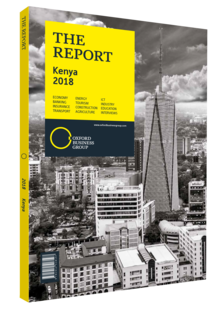Kenyan capital market sees strong early uptake of exchange-traded funds
For many years Kenya’s interaction with the global exchange-traded fund (ETF) arena was a passive one. The nation’s reputation as a lively frontier market meant that it was frequently a component of foreign-based ETFs which targeted global investors with an interest in the potentially higher returns of emerging markets. For instance, in the US, the PowerShares Frontier Markets Portfolio, VanEck Vectors Africa Index and Columbia Beyond BRICs ETF position Kenya within the top-10 countries they cover. However, while international investors have been able to use the EFT vehicle to gain exposure to the Kenyan economy, investors located in the country have lacked access to the increasingly popular instrument until recently.
New Opportunity
The first step in redressing this imbalance came in 2015, when the Capital Markets Authority (CMA) published its ETF Policy Guidance Note, establishing the regulatory framework necessary for the security. Two years later, the first listing of this type of security took place both in Kenya and East Africa on the Nairobi Securities Exchange (NSE): the Barclays Bank’s NewGold ETF. As a result, domestic as well as international investors on the NSE are now able to enjoy the benefits associated with ETFs, which include the ability to diversify exposure through a single instrument made up of numerous stocks, debt securities or commodities; expert fund management and regular reporting; and lower costs than conventional mutual funds.
Less costly funds such as ETFs have grown in popularity as expensive, actively managed funds have put in increasingly underwhelming performances over recent decades. In January 2017 international media reported that 83% of active funds in the US failed to match their stated benchmarks over the previous 10 years, while 40% performed so badly that they were terminated early.
The democratisation of information has largely driven this trend by reducing the ability of active managers to get the “first call” on investment opportunities. As of December 2017 there were around 325,000 Bloomberg terminals in existence, signifying the breadth of those with access to financial data. At the same time, the introduction of fair disclosure regulations worldwide ensures that information is being channelled to all investors simultaneously.
Diversified Offerings
As a result, individual investors generally view ETFs as a cost-effective method of establishing a diversified portfolio of the type which would previously have taken considerable skill or expense to establish. In the case of Kenya’s NewGold ETF, the nation’s investors have been granted local currency exposure to the spot price of gold for the first time, reducing currency risk. The arrival of the country’s first ETF may prove even more useful to institutional buyers in areas such as domestic pension funds, which are restricted by law as to how much they can invest overseas. These securities also fit well with the core-satellite strategies of institutional investors, which are based on lowering costs, tax liability and income volatility, while outperforming the broader stock market.
The listing of the NewGold ETF attracts welcome attention and liquidity to the board. Its structure also reinforces links with other prominent exchanges on the continent. First listed in 2004 on the Johannesburg Stock Exchange, the NewGold ETF is cross-listed and available in five other African markets.
As the CMA sets about implementing its 2018-23 strategic plan, the popularity of the new instrument will be a useful gauge of the potential for other products in the local market, such as derivatives, new index-linked products and real estate investment trusts, which were launched in 2015. The first period of trading for the new instrument has therefore proved encouraging to stakeholders: after selling 1700 units between March and June 2017 market maker Barclays reported the sale of 9700 units over the following three-month period.
You have reached the limit of premium articles you can view for free.
Choose from the options below to purchase print or digital editions of our Reports. You can also purchase a website subscription giving you unlimited access to all of our Reports online for 12 months.
If you have already purchased this Report or have a website subscription, please login to continue.

